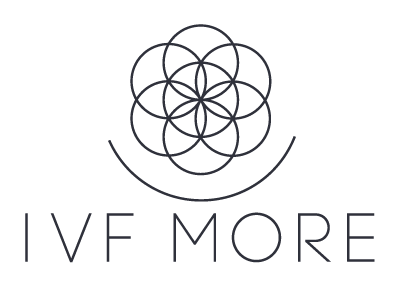Why Do Some IVF Treatments Fail? What IVF MORE® Does Differently
May 2025

For many people, starting an in vitro fertilization (IVF) treatment represents a new hope of achieving pregnancy. However, the reality is that not all cycles are successful. Despite medical advances, the success rates of traditional IVF still face certain limits—especially in patients with complex diagnoses or poor egg quality.
So, why do some IVF treatments fail? And what does IVF MORE® propose as a solution? In this blog, we explain the most common causes of IVF failure and how our exclusive protocol can make a difference.
The Main Reasons Why an IVF Treatment Fails
While each case is unique, there are common factors that may reduce the effectiveness of an IVF cycle:
1. Poor Egg Quality
One of the most critical factors in IVF success is egg quality. As age increases, so does the likelihood of mitochondrial alterations, oxidative stress, or deficiencies in cellular energy. Even if an egg is fertilized, these deficiencies may prevent the embryo from dividing properly or implanting successfully.
2. Genetically Abnormal Embryos
When embryos have chromosomal abnormalities (aneuploidies), they are unlikely to implant or result in a viable pregnancy. Often, these abnormalities originate from eggs that appeared morphologically normal but had poor cellular metabolism.
3. Non-Receptive Endometrium
A healthy embryo needs an optimally receptive endometrium for implantation. Insufficient thickness, poor blood flow, or missing hormone receptors can prevent proper interaction between the embryo and uterus.
4. Complex Diagnoses Not Treated with Comprehensive Solutions
Patients with endometriosis, polycystic ovary syndrome (PCOS), repeated implantation failure, or low ovarian response need more personalized solutions than traditional IVF. A lack of tailored protocols significantly reduces the chances of success.
What Makes IVF MORE® Different?
Instead of applying a one-size-fits-all protocol, IVF MORE® has developed a patented treatment that targets the key issues that commonly lead to IVF failure. This exclusive technique, developed by Ingenes Institute, integrates biotechnology, regenerative medicine, and magnetic field technology to create real, sustainable improvements in fertility.
Let’s explore how each component of IVF MORE® addresses the most common causes of IVF failure:
1. Metabolic Diagnosis: Scientific Selection of the Best Eggs
Unlike conventional IVF, which relies on morphological assessment (the egg’s appearance), IVF MORE® incorporates metabolic diagnosis to evaluate cellular energy, mitochondrial health, and cytoplasmic integrity.
This allows us to:
- Detect eggs with greater developmental potential
- Identify “seemingly normal” eggs that actually are not
- Personalize clinical decisions, such as opting for oocyte restoration
Thanks to this diagnostic approach, we avoid fertilizing eggs that lack the necessary potential, reducing the number of abnormal embryos from the start.
2. Oocyte Restoration: Regenerative Medicine Applied
If the metabolic diagnosis detects functionally deficient eggs, they can be treated through a micromanipulation technique that infuses biochemical and energetic components derived from the patient’s own cells.
This restoration can:
- Increase the egg’s energy
- Reduce DNA fragmentation
- Reactivate deteriorated cellular function
This technique has transformed eggs that would have been discarded into viable, euploid embryos.
3. Endometrial Enhancement with Regenerative Therapies
A non-receptive endometrium can be treated in IVF MORE® with therapies such as:
- Platelet-Rich Plasma (PRP)
- Mesenchymal stem cells
These therapies regenerate endometrial tissue, enhance blood flow, and improve the implantation environment. By directly addressing uterine conditions, implantation rates increase—especially in patients with multiple failed attempts.
4. Magnetic Field Embryo Culture: A Healthier Environment for Embryos
One of the most innovative aspects of IVF MORE® is the use of magnetic field incubators during embryo culture. This technology:
- Protects embryos from oxidative stress
- Promotes more stable cell division
- Optimizes mitochondrial energy usage
This controlled environment improves embryo quality from the earliest stages and has shown to increase implantation rates, even with single embryo transfer.
5. A Personalized Protocol from the Start
IVF MORE® doesn’t follow a one-size-fits-all formula. Each protocol is tailored based on:
- Age and ovarian reserve
- Previous diagnoses
- Reproductive history
- Metabolic and genetic evaluation of eggs
This personalization enables strategic decision-making at each stage of the treatment, optimizing resources and significantly increasing the chances of success.
Real Results, Renewed Hope
The clinical outcomes of IVF MORE® reflect the impact of its comprehensive approach:
- Up to 60% reduction in abnormal embryos
- Successful pregnancies in women previously rejected by other clinics
- Success even with a single viable restored egg
- High implantation rates in women over age 38
These are not just statistics—they are families who achieved their goal after years of failed attempts.
When Science Evolves, Possibilities Multiply
Many IVF treatments fail not because the patient’s body is unresponsive, but because the techniques used are not sufficient to address their specific challenges. IVF MORE® is a scientific and human response to those challenges, allowing people with complex diagnoses to try again—using their own eggs.
Instead of offering a standard option, IVF MORE® provides a personalized solution, backed by science and proven results. If you’ve tried before without success, or are looking for a more advanced option from the start, IVF MORE® may be your next step. Contact us and find out if you’re a candidate for this new era of fertility.
